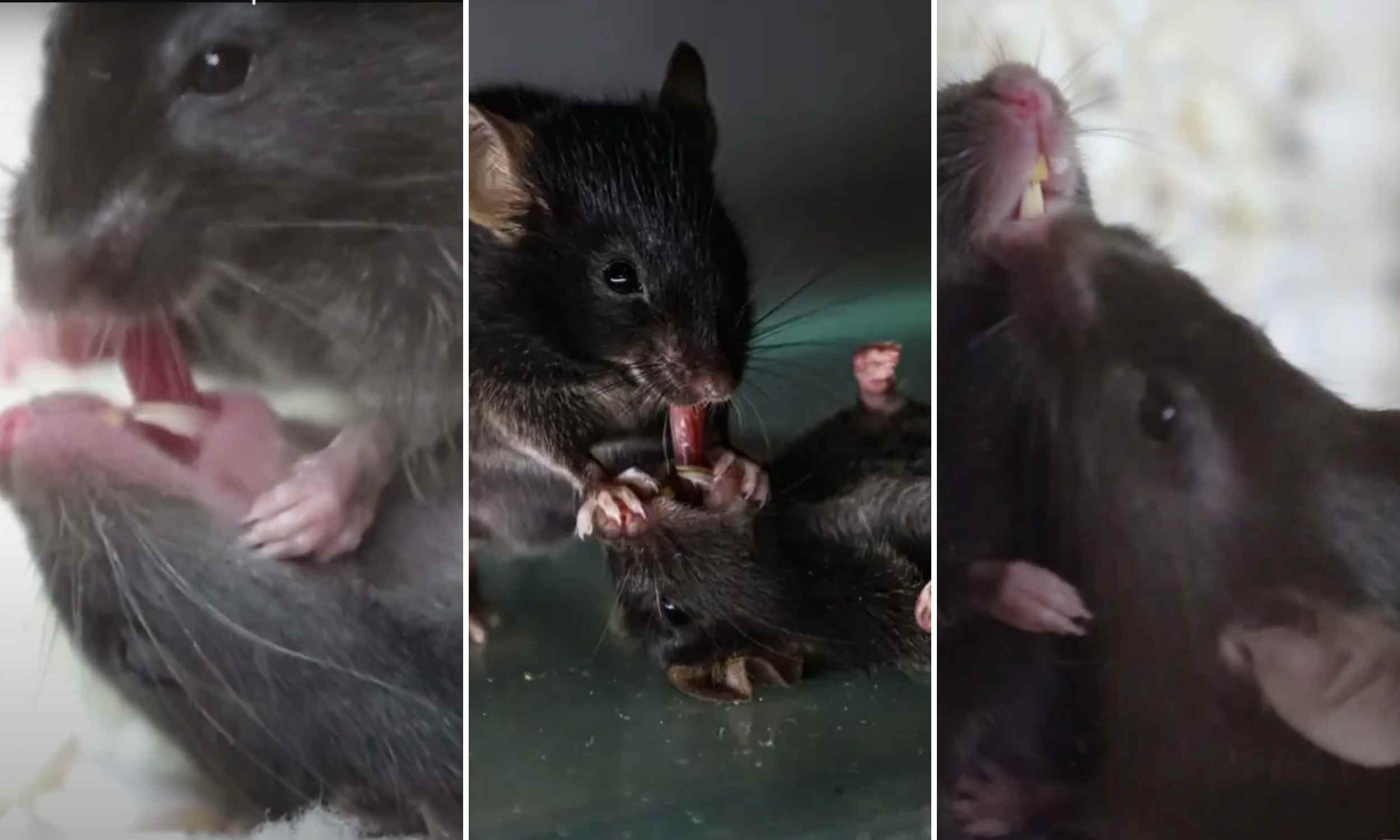
Researchers often find it surprising how mice behave in a lab setting. If a young mouse encounters another mouse that appears inactive, it might engage in various exploratory behaviors, such as pawing its seemingly comatose companion, nibbling at its snout, or even tugging at its limp tongue.
Li Zhang from the University of Southern California and his research team have been studying these intriguing interactions.
They successfully captured video evidence of laboratory mice reacting to a familiar cage mate that had been anesthetized and was unresponsive.
Rescue Behaviors Exhibited by Mice
“The process begins with sniffing, followed by grooming, leading to more intense physical interactions,” explained Li Zhang.
Researchers observed mice grooming and nibbling with a focus on the mouth area, attempting to pull the tongue out to help clear the airway of their motionless friend.
Similar behaviors have been noted in mice interacting with deceased companions.
The study showed that these repeated gestures diminished once the still mouse regained consciousness and movement.
Furthermore, it was observed that mice were more likely to engage with a familiar unresponsive partner than with an unfamiliar one, suggesting that prior exposure influences these rescue-like actions.
Learning from Other Species
In the animal kingdom, larger creatures such as chimpanzees, dolphins, and elephants have also demonstrated altruistic behaviors towards distressed members of their groups.
For instance, dolphins have been known to lead an injured member to the surface for air, capturing the interest of researchers examining social behaviors in marine life.
Similarly, elephants have shown a tendency to assist injured relatives, indicating that the instinct to help extends beyond humans.
However, monitoring rodent behavior in their natural habitats can be challenging, as mice tend to seek shelter and scatter at the slightest sign of danger, making it difficult to observe their interactions with ailing comrades in the wild.
The Influence of Oxytocin on Rescue Behavior
These compassionate gestures appear to be linked to the hormone oxytocin, known to play a crucial role in forming social bonds across various species. The recent research identified active oxytocin-releasing neurons in both the amygdala and hypothalamus.
These areas of the brain, recognized for managing emotions and social interactions, activated when mice identified a distressed cage mate.
“If we extended the observation period, we might see an even higher success rate,” noted team member Huizhong Tao, also from USC.
Additional findings revealed that deactivating these neural signals or inhibiting oxytocin release led to fewer helping behaviors from the mice. Conversely, activating these neurons resulted in an increase in grooming and nibbling actions.
This connection between oxytocin and nurturing behavior aligns with past studies, reinforcing the idea that many mammals possess innate responses to care for one another.
Significance for Social Cohesion and Survival
Researchers propose that such behaviors may be essential for maintaining group cohesion and enhancing survival rates. Young mice that engaged with an unresponsive mate were found to recover more quickly than those that were neglected.
This slight difference could have significant implications for group dynamics in natural settings, where every moment can be critical.
While some scientists recommend caution in making broad generalizations, as animal behavior can often appear human-like with complex motivations, these laboratory findings suggest that even small creatures may exhibit more empathy toward their companions than previously thought.
Exploring the Broader Context
Social bonds are vital for various activities across the animal kingdom, from defense to caregiving.
This study highlights the possibility that numerous species may possess inherent behaviors that contribute positively to group welfare.
Researchers theorize that similar altruistic behaviors could exist in other animals, yet remain overlooked due to the difficulties in observing such moments in their natural environments.
Given that oxytocin is prevalent in many vertebrates, it is proposed that this hormone may underpin an instinctual response to assist a struggling group member in times of need.
This rehabilitation behavior could be more widespread among social animals than previously recognized.
The revelation that mice act as miniature caregivers raises further intriguing questions. Scientists plan to investigate variations among different strains of mice.
Future studies may also explore how environmental influences, including stress and population density, affect the likelihood of mice aiding an unresponsive companion.
The findings of this study are published in Science.
—–
If you found this article interesting, subscribe to our newsletter for more engaging content and updates.
Connect with us on EarthSnap, a free app developed by Eric Ralls and Earth.com.
—–









